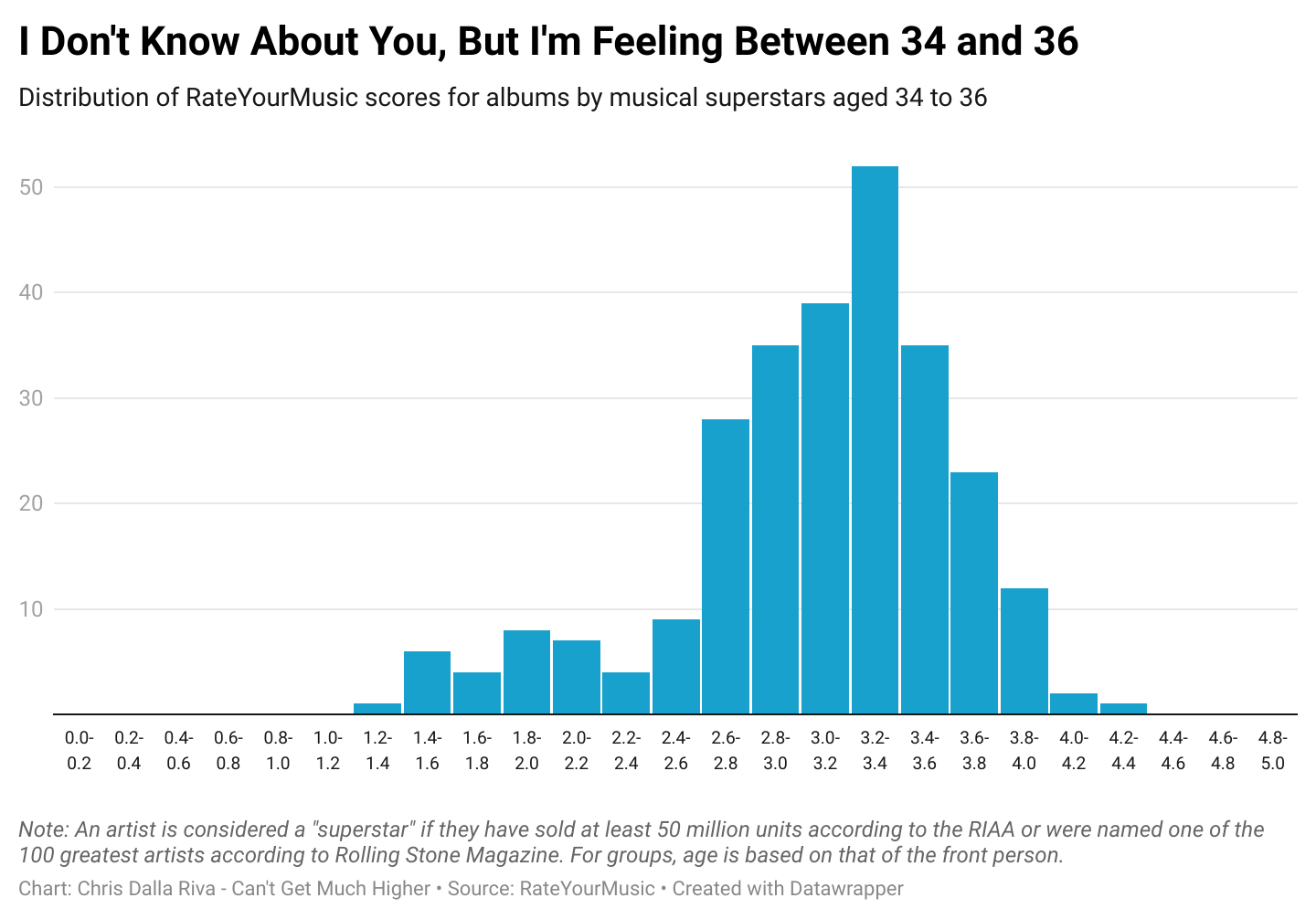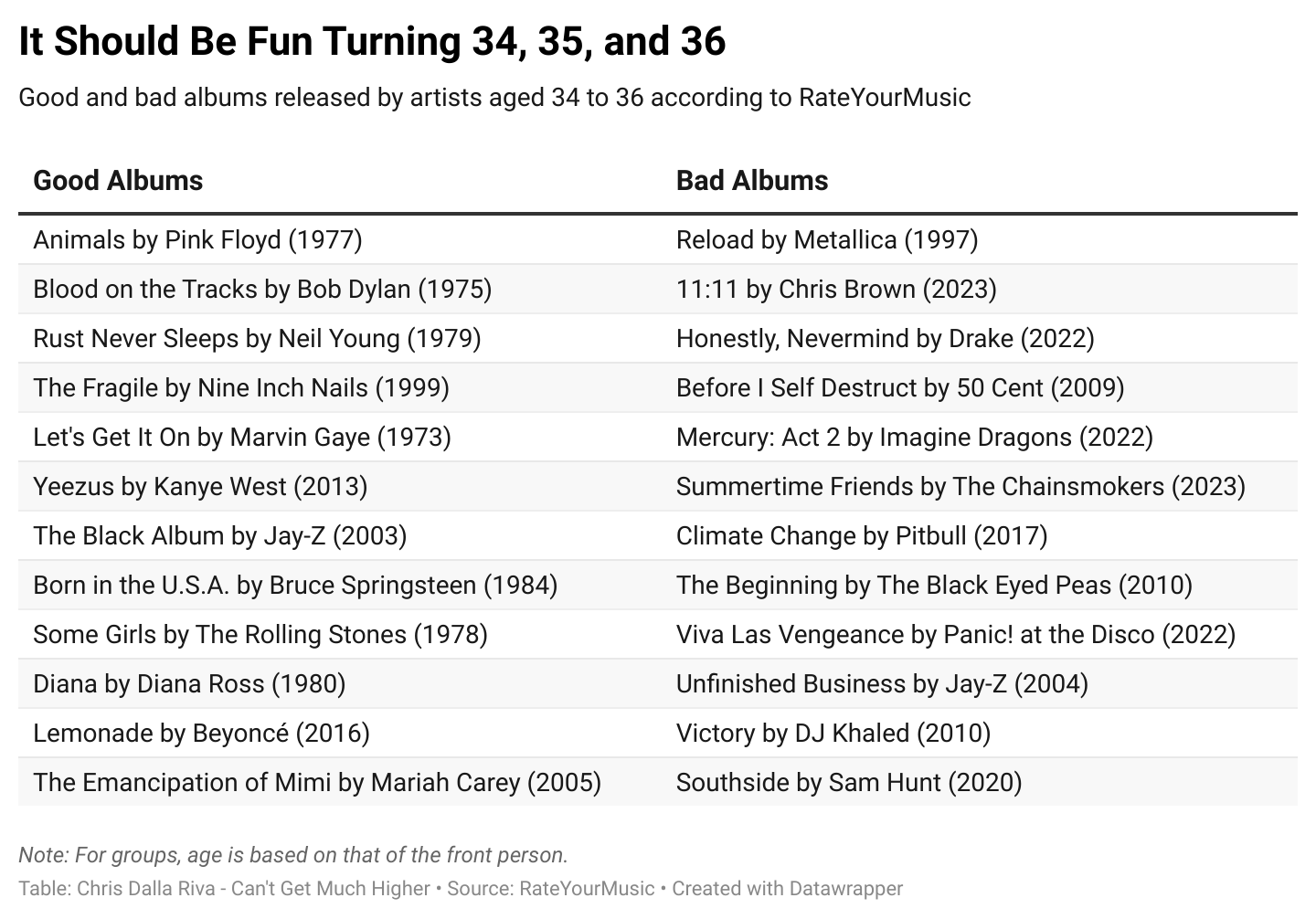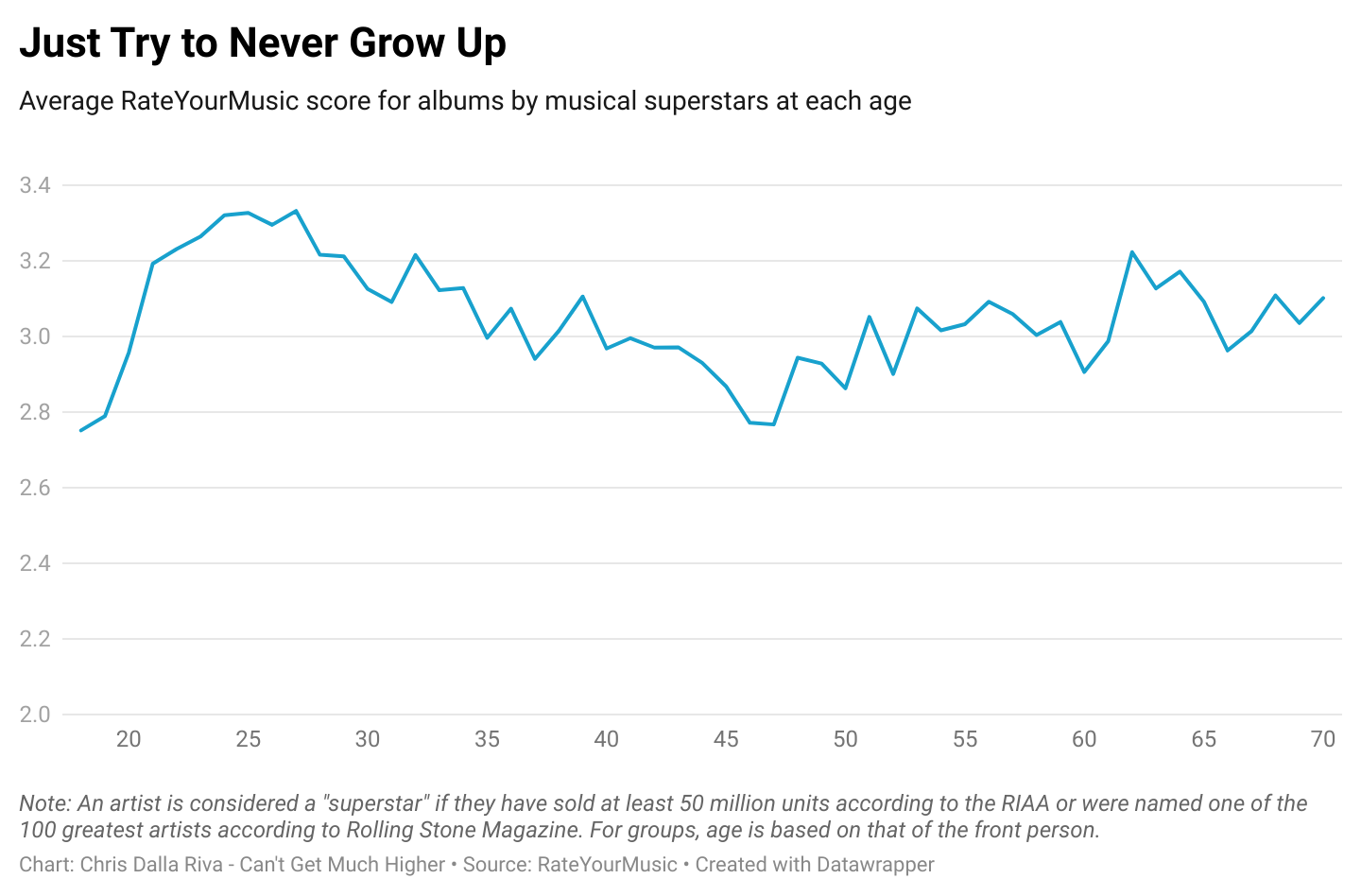Is Taylor Swift An Over-Rated 35 Year Old?
While her fans continue to gobble up her music like their lives depend on it, the critical reception of this record has been somewhere between muted and negative. But is it unusual?

Taylor Swift (Credit: Mert Alas & Marcus Piggott/MCA Nashville)

Not long after George Harrison’s death, his son Dhani was giving an interview on the news when he recounted a humorous conversation between he and his late father.
I said to him last year or the year before … Well, you know, I’ve got a degree. I’m [twenty-three]. He laughed and was like, “What was I doing when I was 23?” I said, “I don’t know.” He was like, “What was I doing? Oh, yeah, making Sgt. Pepper.”
The moral of this father-son conversation is that you should never—under any circumstance—compare your accomplishments to a successful musician, especially if said musician was a member of The Beatles. As I note in my forthcoming book, “If you’re in the business of topping the charts, it’s a good idea to drink from the fountain of youth.” Success in the pop world happens very young. You’re bound to look like you’ve been slacking if you compare your output at any age to that of a popular musician.
This (somewhat) naturally brings us to Taylor Swift, another person who you should never compare yourself to. Before she’d turned 25, Swift had firmly cemented her music legacy, selling millions of records and touring the world. As she closes out her 35th year, her world domination continues. Her latest record, The Life of a Showgirl, just set the all time record for first week sales.
But while her fans continue to gobble up her music like their lives depend on it, the critical reception of this record has been somewhere between muted and negative. Pitchfork declared that Swift’s music has “never been less compelling.” The Guardian described the record as “dull razzle-dazzle from a star who seems frazzled.”
Of course, there have been some positive reactions—like a rave from Rolling Stone—but I tend to agree that the record fell short. The album was lyrically clunky and musically derivative, two major demerits given that Swift is often hailed as the greatest songwriter of her generation and Max Martin and Shellback—the production duo behind the record—receive just as much praise.
I kind of felt like we should cut Taylor some slack, though. (Okay, not really. When you’re heaped with praise and riches you deserve some scrutiny.) How often are world-famous artists breaking new ground at 35? Pop music, as we noted, is a young person’s game. Maybe The Life of a Showgirl is par for the course. I decided to take a look.
First, I needed to find artists in Taylor Swift’s peer group. To do that, I turned to two places: the RIAA and Rolling Stone. From the former, I gathered a list of every artist who has sold at least 50 million units in the US, a proxy for Swift’s commercial success. From the latter, I grabbed their list of the 100 greatest artists of all-time, a proxy for Swift’s critical success. This left me with a list of 199 musical peers for Taylor Swift, including Drake, Elvis Presley, Katy Perry, and The Rolling Stones, among many others.
For each of those peer artists, I then grabbed their entire album catalog, along with the ratings for each of those albums from RateYourMusic. RateYourMusic is a long-running, user-maintained music site that allows people to log, categorize, rate, and review music. The site has its biases, but it is basically the only place where you can find ratings for every album. With the rating data paired with the artist data, I could then see how The Life of a Showgirl compared to albums by artists both near Taylor Swift’s stature and age cohort.

Rather than just looking at albums released by 35-year-olds, I expanded to include those released between ages 34 and 36. This left us with 266 albums. According to RateYourMusic, the average score for an album released by a superstar artist between the ages of 34 and 36 is 3.07. The Life of a Showgirl currently sits at a rating of 1.72. Opinions can change, but that’s not great.
To make things a bit more concrete, I think it’s helpful to see specific examples of what other superstar artists were releasing in that age bracket. Yes, there are some classics and some clunkers. But what most struck me the most about trawling through these albums was how often the vast majority were were forgettable even if they weren’t notably bad.
Elton John, for example, released Jump Up! in the year of his 35th birthday. Jump Up! is not the worst album I’ve ever heard. It’s also not great. It’s just an album, perfectly rated as 2.97 by the folks on RateYourMusic. Maybe the mid-30s are just hard for superstars.

But we can also check this. Rather than just limiting this analysis to albums released by superstars between 34 and 36, we can look at every album these esteemed artists released. When we do that, we see a fascinating trajectory for album quality.
From age 18 to 28, album quality dramatically increases from an average RateYourMusic score of 2.39 to 3.33. That’s the peak for your average superstar. From age 28 to 50, the average RateYourMusic album score slowly falls back to 2.93. In other words, artists don’t regress to their earliest years, but they can’t maintain the quality of the late-20s.

So, is the message from all of this that you should put down your instrument after 30? Absolutely not. Many artists release career-defining work later in life. And this isn’t just anecdotal. The data bears this out. After the RateYourMusic score reaches it mid-life nadir, it begins to recover. By the time artists enter their 60s, the average score is back where it was in their early-30s.
In other words, neither you nor Taylor Swift should put down their instrument. You might hit a creative rut by your 30s, but you will come roaring back in your later years if you keep at it.
Love music and statistics? Pre-order Chris Dalla Riva’s forthcoming book Uncharted Territory here.







